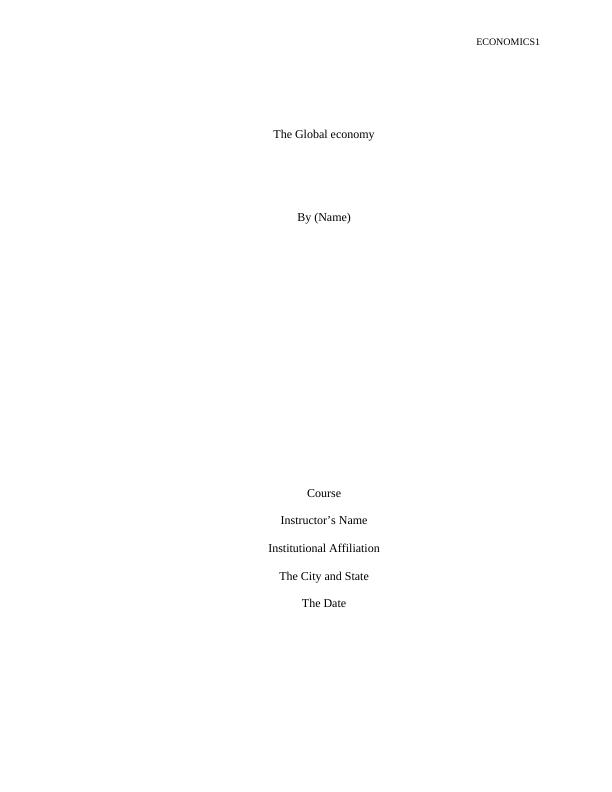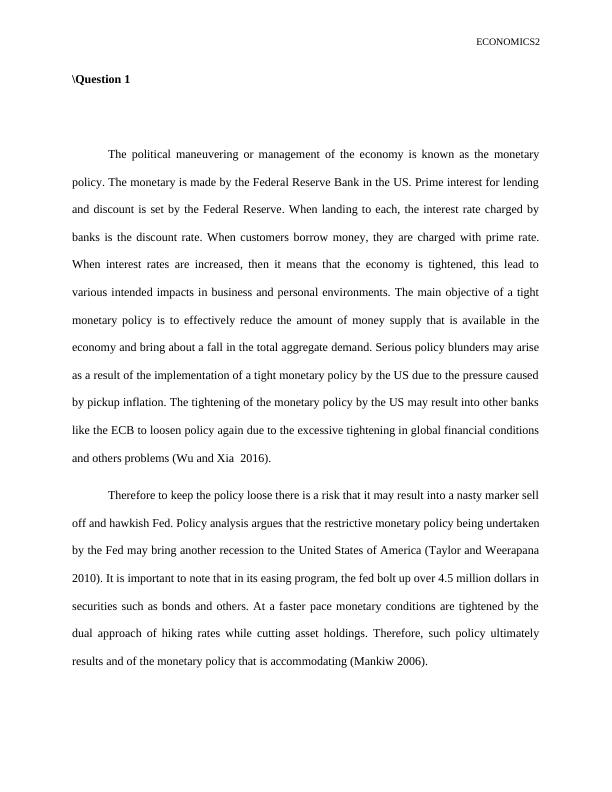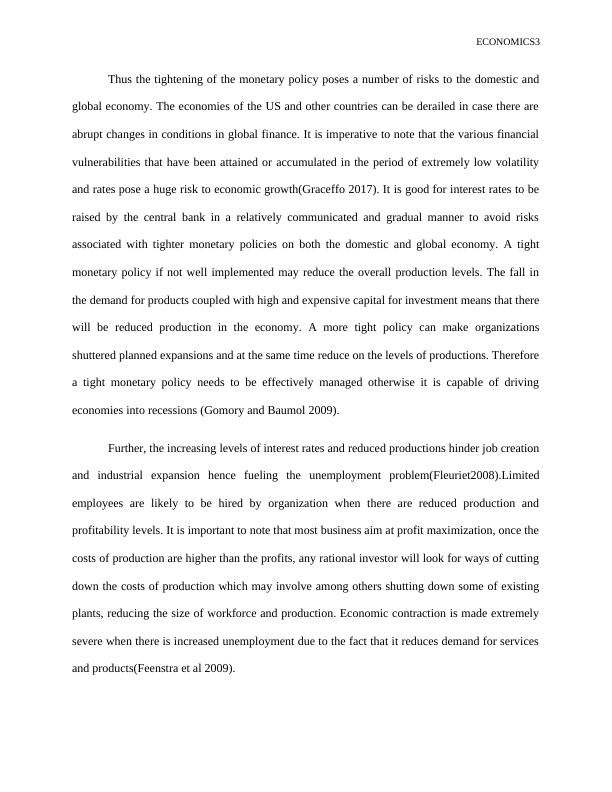Impact of Tight Monetary Policy and US Protectionism Policy on Global Economy
Answer two questions on the global economy with a word limit of 1200 words for each question. The answers should be properly referenced and conform to an essay structure.
12 Pages3349 Words306 Views
Added on 2023-04-22
About This Document
This article discusses the impact of tight monetary policy and US protectionism policy on the global economy. It covers the risks posed by a tight monetary policy, the reasons behind US protectionism policy against China, and the implications of the policy on the US economy and industries.
Impact of Tight Monetary Policy and US Protectionism Policy on Global Economy
Answer two questions on the global economy with a word limit of 1200 words for each question. The answers should be properly referenced and conform to an essay structure.
Added on 2023-04-22
ShareRelated Documents
End of preview
Want to access all the pages? Upload your documents or become a member.
Monetary Policy and Global Economy
|13
|3255
|356
ECO20004: Macroeconomic Policy
|5
|765
|94
MONETARY POLICY.
|4
|449
|51
Impacts of US Monetary Policy Transition on Emerging Economies
|14
|3820
|309
Role of the Federal Reserve in solving America’s Recession
|7
|1220
|187
Normalization of Asian Central Bank and Challenges to Normalization
|9
|2067
|105




